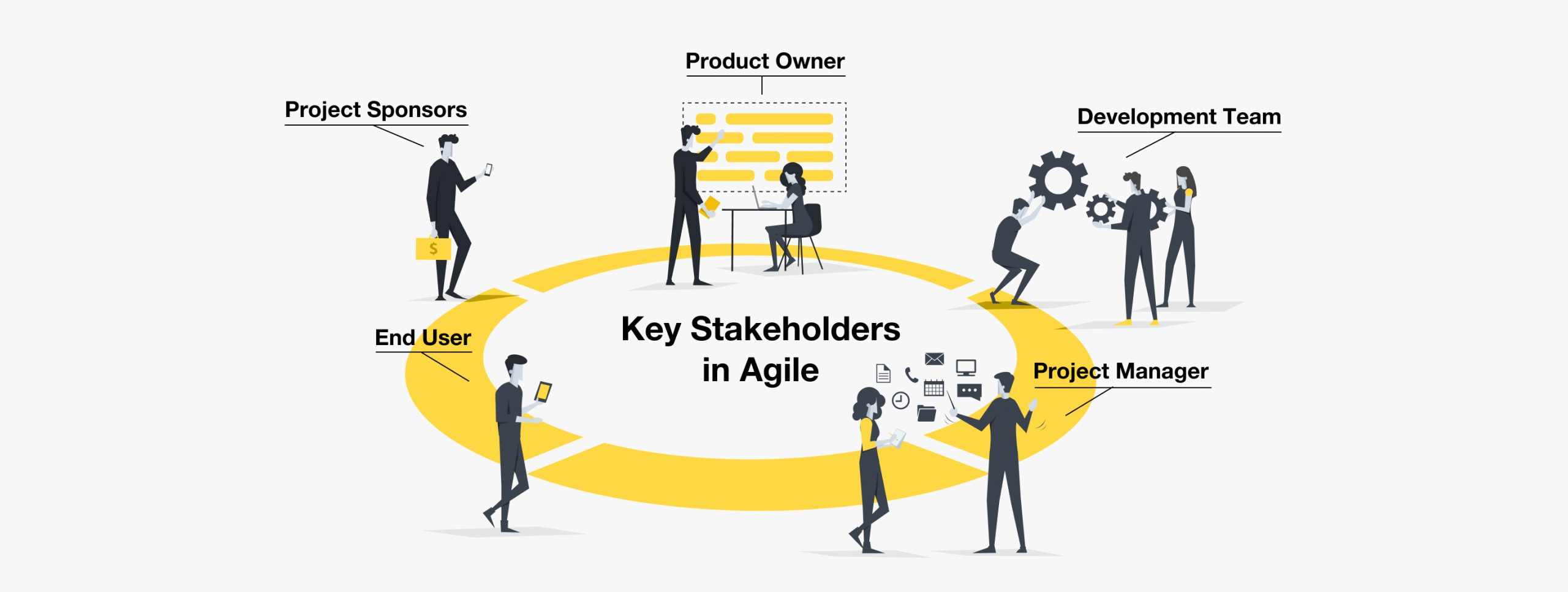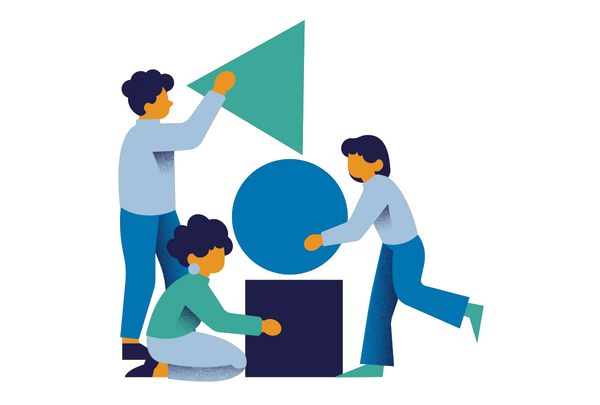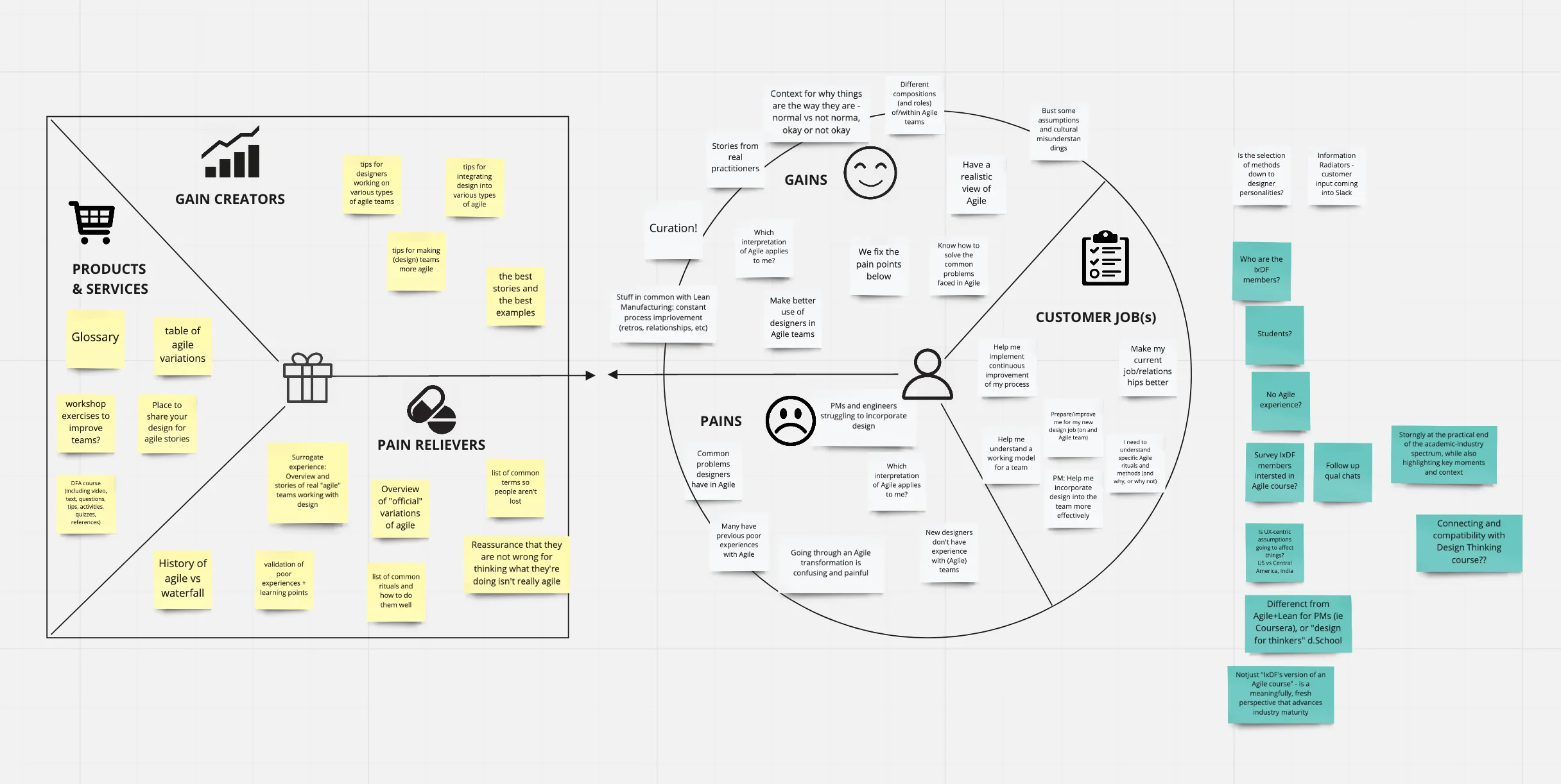Coaching Value Delivery: Strategies to Drive Prioritization
By Team Lean Agile Intelligence

Work Prioritization and Stakeholder Engagement
The world of Agile development is ever-evolving, and it is the role of the Agile Coach and Scrum Master to stay current with the latest practices and techniques to help teams continuously improve. One critical area of focus for an Agile Coach is Coaching Value Delivery, which is the process of ensuring that the team is delivering maximum value to the customer at all times. One way to do that is by having an effective stakeholder engagement process.
This post delves into the most efficient methods to tackle Coaching Value Delivery and reveals vital best practices that can be adopted during various phases of your learning journey. By adhering to these fundamental techniques, you can develop the competence and awareness necessary to execute effective team strategies. Nonetheless, it's crucial to recognize that Coaching Value Delivery is only a fragment of the broader context. To attain a comprehensive insight into your present coaching process status, we suggest using our free agile assessment for Scrum Masters and Agile Coaches.
Coaching Value Delivery and The Learning Journey
At Lean Agile Intelligence, we recognize Coaching Value Delivery as the individual's ability to create an environment where value drives prioritization and delivery. We divided the learning journey into 4 different stages: Developing, Emerging, Adapting, and Optimizing. In the following sections, we will discuss each stage in detail as well as provide practical tips and techniques to help you strengthen your skills in this area.

Source - Key Stakeholders in Agile Product Development
Developing
A coach “developing” an understanding of the value of Coaching Value Delivery and adopting the foundational techniques should focus on the following improvements:
-
The What: Facilitates conversations with stakeholders (i.e., business owners, customers, product management) to ensure that team members understand their purpose and the value they are creating
- The How: Here are some ways coaches can facilitate conversations with stakeholders to ensure that team members understand their purpose and the value they are creating:
-
Stakeholder Interviews: Coaches can conduct stakeholder interviews to gather insights and perspectives from business owners, customers, product management, and other stakeholders. These interviews can help team members gain a deeper understanding of the needs, expectations, and priorities of stakeholders, and how their work contributes to fulfilling those needs. Coaches can facilitate these interviews by creating a structured approach, preparing relevant questions, and actively listening to the responses.
-
Value Proposition Discussions: Coaches can facilitate value proposition discussions with stakeholders to identify and clarify the value that the team's work is creating. Value proposition discussions can involve exploring the unique selling points of the product or service, identifying the key benefits and outcomes for customers or users, and discussing how the team's work aligns with the value proposition.
-
Storytelling and Visualization: Coaches can facilitate conversations with stakeholders by using storytelling and visualization techniques to make the purpose and value of the team's work more tangible and relatable. Coaches can help team members create stories or visual representations that illustrate how their work is making a difference to customers, users, or the organization. For example, coaches can encourage team members to create user stories that describe the impact of their work on users' lives or create visual models, such as process diagrams or flowcharts, that show how their work fits into the larger value delivery process. Storytelling and visualization can help team members connect emotionally with the purpose and value of their work, making it more meaningful and memorable.
-
- The How: Here are some ways coaches can facilitate conversations with stakeholders to ensure that team members understand their purpose and the value they are creating:
-
The What: Ensures that the vision and goals of the product/initiative are visible and always considered
- The How: Below are just a few examples of ways coaches can ensure that the vision and goals of the product or initiative are visible and always considered by the team. The specific approach may vary depending on the organization, team dynamics, and the nature of the product or initiative, and it's important for coaches
-
Vision and Goal Artifacts: Coaches can work with the product team to create artifacts that visually represent the product or initiative's vision and goals. This can include a product vision statement, a product roadmap, goal boards, or visual representations of the customer journey or user stories. These artifacts can be displayed prominently in the team's physical or virtual workspace to ensure that the vision and goals are always visible and serve as a constant reminder for the team.
-
Sprint Goals: Coaches can ensure that sprint goals are aligned with the product or initiative's vision and goals. Sprint goals are short-term objectives that the team sets for each sprint, typically aligned with the product vision and goals. Coaches can work with the team during sprint planning sessions to ensure that the sprint goals are defined in a way that contributes to the overall product or initiative's vision and goals.
-
Regular Goal Review: Coaches can facilitate regular goal review sessions where the team reviews the progress toward the product or initiative's vision and goals. These sessions can be held during sprint reviews, retrospectives, or separate goal review meetings. Coaches can use visual aids, such as goal boards or progress trackers, to visually represent the goals and their progress.
-
- The How: Below are just a few examples of ways coaches can ensure that the vision and goals of the product or initiative are visible and always considered by the team. The specific approach may vary depending on the organization, team dynamics, and the nature of the product or initiative, and it's important for coaches
- The What: Facilitates sessions where a wide range of contributors, especially those doing the work, engage in the prioritization and valuation process of upcoming work
- The How: Here are some strategies that coaches can facilitate sessions where a wide range of contributors, especially those doing the work, engage in the prioritization and valuation process of upcoming work:
-
Collaborative Workshops: Coaches can organize collaborative workshops where team members from different roles and functions come together to prioritize and value upcoming work. These workshops can be facilitated using techniques such as story mapping, value mapping, or impact mapping, where team members work together to visualize the work, identify priorities, and evaluate the value or impact of each item.
-
Lean Portfolio Management: Coaches can facilitate LPM practices such as portfolio Kanban, Lean business cases, or investment themes, where team members collaborate to prioritize and value upcoming work based on strategic goals and business outcomes. LPM is an Agile approach that aligns strategy, investment, and execution through a value stream, and involves stakeholders from various levels in the organization, including business owners, product managers, product owners, and team members.
-
Inclusive Decision-Making: Coaches can ensure that the prioritization and valuation process is inclusive and involves contributions from team members who are doing the work. Coaches can create a safe and collaborative environment where team members feel empowered to share their insights, perspectives, and concerns about the upcoming work.
-
Data-Driven Decision Making: Coaches can encourage a data-driven approach to prioritization and valuation, where decisions are based on objective data and evidence rather than subjective opinions. By using data and evidence, team members can make more informed and objective decisions about the upcoming work.
-
- The How: Here are some strategies that coaches can facilitate sessions where a wide range of contributors, especially those doing the work, engage in the prioritization and valuation process of upcoming work:

Emerging
A coach “emerging” beyond the foundational techniques of Coaching Value Delivery and embracing it as they become more proficient should focus on the following improvements:
-
The What: Facilitates conversations, so that team members know the "WHY" behind a priority decision
- The How: Coaches can use storytelling techniques and visual aids to convey the "WHY" behind priority decisions. Storytelling can be a powerful way to make priorities relatable and understandable to team members. Coaches can share stories or anecdotes that illustrate the rationale and reasoning behind priority decisions, and how they contribute to the value or impact of the product or initiative. Visual aids can help make complex concepts or decisions more visual and tangible, making it easier for team members to understand the "WHY" behind priority decisions. Coaches can use visual aids during team meetings or workshops to illustrate the rationale, benefits, or trade-offs of different priorities.
-
The How: Coaches can facilitate conversations that provide context for priority decisions and use questioning techniques. This can include discussing the strategic goals, business objectives, or customer needs that are driving the prioritization decisions. By understanding the broader context, team members can better grasp the "WHY" behind priority decisions and how they align with the overall vision and goals of the team or organization. Coaches can ask open-ended questions, such as "What are the reasons behind this priority decision?" or "How does this align with our overall goals?", to prompt team members to articulate their understanding and perspective on the priority decision. This can help team members connect the dots and see the bigger picture behind the priorities.
-
The What: Coaches others on backlog management techniques, ensuring committed items have a description, order, estimate, and a clear explanation of the value they deliver
-
The How: Conducting backlog refinement sessions where team members review and discuss upcoming user stories in the backlog is crucial for successfully managing the team backlog items. During these sessions, coaches can coach team members on techniques for refining the user stories, ensuring that they have clear descriptions, appropriate ordering, accurate estimations, and a clear explanation of the value they deliver. Coaches can provide guidance, ask probing questions, and encourage discussion among team members to improve the quality of user stories in the backlog. Apart from having backlog refinement sessions, below are some more strategies that coaches can use.
-
User Story Writing Workshops: Coaches can conduct user story writing workshops to coach team members on writing effective and well-defined user stories for the backlog. These workshops can cover topics such as the importance of clear descriptions, proper ordering, appropriate estimation techniques, and articulating the value delivered by each user story.
-
Definition of Ready (DoR): Coaches can work with the team to establish a Definition of Ready (DoR) as a criteria that needs to be met before a user story is considered ready to be committed to the backlog. This can include criteria such as having a clear description, proper ordering, estimation, and value explanation. Coaches can ensure that team members understand and follow the DoR, and provide coaching and feedback to ensure that user stories meet the criteria before they are added to the backlog.
- Providing Examples and Templates: Coaches can provide examples and templates of well-defined user stories that can serve as a reference for team members. These examples can illustrate the expected format, structure, and content of user stories, including clear descriptions, proper ordering, accurate estimations, and value explanations.
-
-
-
The What: Teaches prioritization techniques (i.e., Cost of Delay, WSJF) that include value as a core factor
- The How: Let's take a look at some prioritization techniques that agile coaches and scrum masters can use.
- Cost of Delay (CoD): Coaches can teach the concept of Cost of Delay, which is a prioritization technique that helps teams understand the economic impact of delaying the delivery of a particular item. Coaches can explain the different components of Cost of Delay, such as the potential loss of revenue, increased risk, missed market opportunities, and customer dissatisfaction, and how these factors contribute to the overall value of an item. Coaches can use examples and case studies to illustrate the concept of Cost of Delay and how it can be used to prioritize work items in the backlog.
- Weighted Shortest Job First (WSJF): Coaches can teach the WSJF prioritization technique, which is commonly used in the SAFe (Scaled Agile Framework) methodology. WSJF assigns a priority score to each work item by dividing its perceived value by the time it takes to complete, taking into consideration the relative size, risk reduction, and opportunity enablement. Coaches can guide teams on how to calculate the WSJF score for different backlog items, and how to use it to prioritize work items based on their value and time-to-market considerations.
- Impact-Effort Matrix: Coaches can use the Impact-Effort Matrix, also known as the Value-Effort Matrix, as a prioritization technique that combines the value of an item with the effort required to deliver it. The matrix typically has four quadrants: High Impact, Low Effort (Quick Wins), High Impact, High Effort (Big Bets), Low Impact, Low Effort (Fill-Ins), and Low Impact, High Effort (Thankless Tasks). Coaches can guide teams on how to assess the impact and effort of different backlog items and use the matrix to prioritize work items based on their value and effort considerations.
- Cost of Delay (CoD): Coaches can teach the concept of Cost of Delay, which is a prioritization technique that helps teams understand the economic impact of delaying the delivery of a particular item. Coaches can explain the different components of Cost of Delay, such as the potential loss of revenue, increased risk, missed market opportunities, and customer dissatisfaction, and how these factors contribute to the overall value of an item. Coaches can use examples and case studies to illustrate the concept of Cost of Delay and how it can be used to prioritize work items in the backlog.
- The How: Let's take a look at some prioritization techniques that agile coaches and scrum masters can use.
-
The What: Leverages tools (i.e., story mapping, release planning) to facilitate the creation of MVP and help drive scope negotiations
-
The How: Coaches can use different tools such as Story Mapping, Value-Based Prioritization Techniques, and Establishing Definition of Done to facilitate the creation of Minimum Viable Product (MVP) and help drive scope negotiations. Release Planning is also another great strategy. Coaches can facilitate release planning sessions with teams to collaboratively plan and prioritize the backlog items for upcoming releases, including the MVP. Release planning involves identifying the most valuable and feasible backlog items for a specific release based on factors such as business priorities, customer needs, technical feasibility, and team capacity. Coaches can guide teams in using techniques such as timeboxing, risk analysis, and prioritization techniques to drive scope negotiations and ensure that the MVP is well-defined and achievable within the given time frame.
-
* * * * * *
"It's the responsibility of the scrum master to ensure the event is successful and engaging."
* * * * * *
Adapting
A coach that is “adapting” the Coaching Value Delivery to extract the full benefit should focus on the following improvements:
-
The What: Teaches the use of outcome measures, such as Net Promoter Score (NPS), customer usage, and sales targets, to inform value-based priority decisions
-
The How: It's important to note that the choice of outcome measures may vary depending on the specific context and goals of the organization, and coaches should work closely with teams to select and use the most relevant outcome measures for their particular situation. Here some examples of outcome measures that coaches can use to inform value-based priority decisions:
- Net Promoter Score (NPS): NPS is a widely used customer satisfaction metric that measures the likelihood of customers recommending a product or service to others.
- Customer Usage Metrics: Coaches can teach teams how to use customer usage metrics, such as usage frequency, time spent on a feature, and engagement rates, as outcome measures to inform value-based priority decisions. These metrics provide insights into how customers are using a product and which features or functionalities are most frequently used or highly valued by customers.
- Sales Targets: Sales targets are a common business metric used to measure the success of a product or service.
- Customer Feedback: Customer feedback can come from various sources, such as customer interviews, surveys, user feedback, and support tickets.
- Business Impact Metrics: Coaches can teach teams how to use business impact metrics, such as return on investment (ROI), cost savings, and revenue generation, as outcome measures to inform value-based priority decisions. These metrics provide a quantitative measure of the value and impact of a product or feature on the overall business objectives.
- Net Promoter Score (NPS): NPS is a widely used customer satisfaction metric that measures the likelihood of customers recommending a product or service to others.
-
-
The What: Facilitates collaborative prioritization meetings (i.e., Value Poker, Participatory Budgeting) to gain different perspectives and create a broader view of value
- The How: Let's take a closer look into strategies that coaches can use to facilitate collaborative prioritization meetings:
- Value Poker: Coaches can facilitate collaborative prioritization meetings using the Value Poker technique, which involves team members assigning relative values to backlog items based on their perceived importance or priority.
- Participatory Budgeting: Participatory Budgeting technique involves team members collectively deciding on the allocation of resources, such as time, effort, or budget, to different backlog items. Coaches can guide teams in engaging in open discussions, brainstorming, and deliberation to collectively prioritize backlog items based on their potential value and impact.
- Kano Model: Coaches can facilitate collaborative prioritization meetings using the Kano Model, which is a technique that helps teams categorize backlog items based on their perceived value to customers. The Kano Model classifies features into different categories, such as must-have, attractive, one-dimensional, indifferent, and reverse, based on how they impact customer satisfaction.
- Value-Effort Matrix: Value-Effort Matrix is a visual tool that helps teams assess and prioritize backlog items based on their value and effort required for implementation.
- Value Poker: Coaches can facilitate collaborative prioritization meetings using the Value Poker technique, which involves team members assigning relative values to backlog items based on their perceived importance or priority.
- The How: Let's take a closer look into strategies that coaches can use to facilitate collaborative prioritization meetings:

Source - What are Information Radiators?
Optimizing
A coach “optimizing” knowledge sharing of the Coaching Value Delivery practice learnings across the enterprise should focus on the following improvements:
-
The What: Teaches and shares advanced techniques to orchestrate Value-driven decisions outside of those they directly support (i.e., Communities of Practice, Workshops, Mentoring)
-
The How: It's important for coaches to tailor their teaching and sharing approach to the needs and context of the individuals and teams they are working with. Customizing the content, format, and delivery method of the teaching and sharing activities can help ensure that advanced techniques for value-driven decision making are effectively learned, applied, and integrated into the organization's practices.
- Communities of Practice: Coaches can facilitate Communities of Practice (CoP) where practitioners across teams or departments come together to share knowledge, experiences, and best practices related to value-driven decision making. Coaches can organize regular CoP sessions focused on advanced techniques for prioritization, backlog management, and value-driven decision making. These sessions can include presentations, discussions, workshops, and case studies, allowing practitioners to learn from each other and deepen their understanding of value-driven decision making. If you are interested in learning more, we recommend reading "Cultivating Communities of Practice: A Guide to Managing Knowledge" by Etienne Wenger, Richard McDermott, and William M. Snyder.
- Here is a list of different strategies to teach and share advanced techniques:
- Hosting Workshops
- Established Mentoring between team members
- Have Internal Training Programs
- Leverage Knowledge Sharing Platforms
- Communities of Practice: Coaches can facilitate Communities of Practice (CoP) where practitioners across teams or departments come together to share knowledge, experiences, and best practices related to value-driven decision making. Coaches can organize regular CoP sessions focused on advanced techniques for prioritization, backlog management, and value-driven decision making. These sessions can include presentations, discussions, workshops, and case studies, allowing practitioners to learn from each other and deepen their understanding of value-driven decision making. If you are interested in learning more, we recommend reading "Cultivating Communities of Practice: A Guide to Managing Knowledge" by Etienne Wenger, Richard McDermott, and William M. Snyder.
-
* * * * * *
"In order to achieve fast, decentralized decision making stakeholders need to be not only available but actively engaged during a program-level planning event."
* * * * * *
Conclusion
In conclusion, Coaching Value Delivery is a crucial practice for Agile coaches to help teams deliver value to customers and stakeholders. As coaches become more proficient, they should focus on improving various aspects such as ensuring work is accepted during sprints, coaching stakeholders to attend sprint reviews, engaging stakeholders at program-level planning, and making Scrum teams' work and results transparent to the entire organization. By adopting the Criteria Method, coaches can effectively develop, emerge, adapt, and optimize their coaching practices to help teams continuously improve and deliver value. For a thorough assessment of your current coaching process status, we offer a free agile assessment for Scrum Masters and Agile Coaches that you can take advantage of.